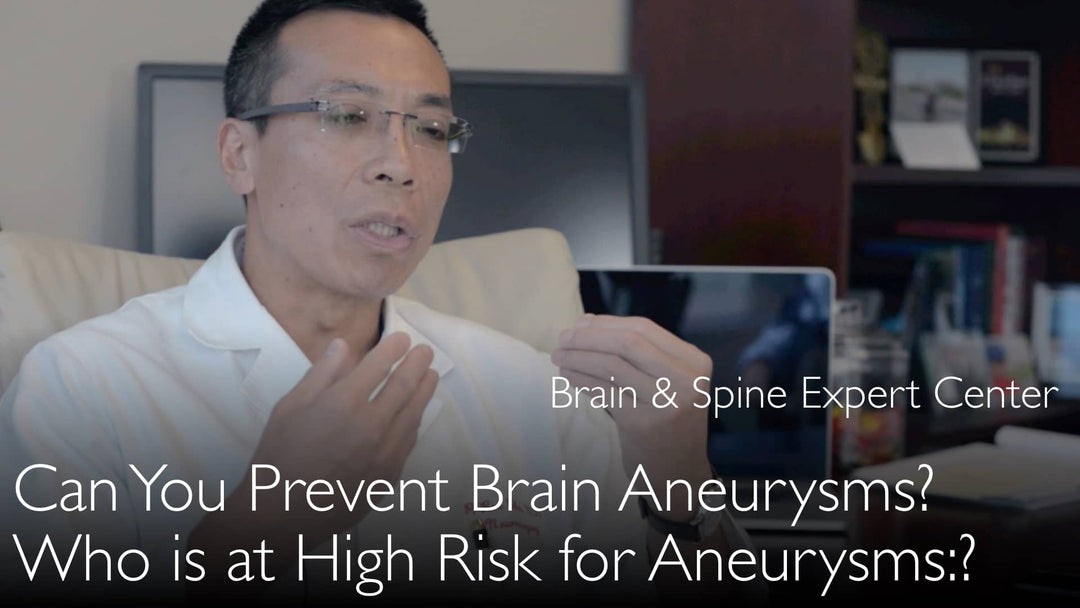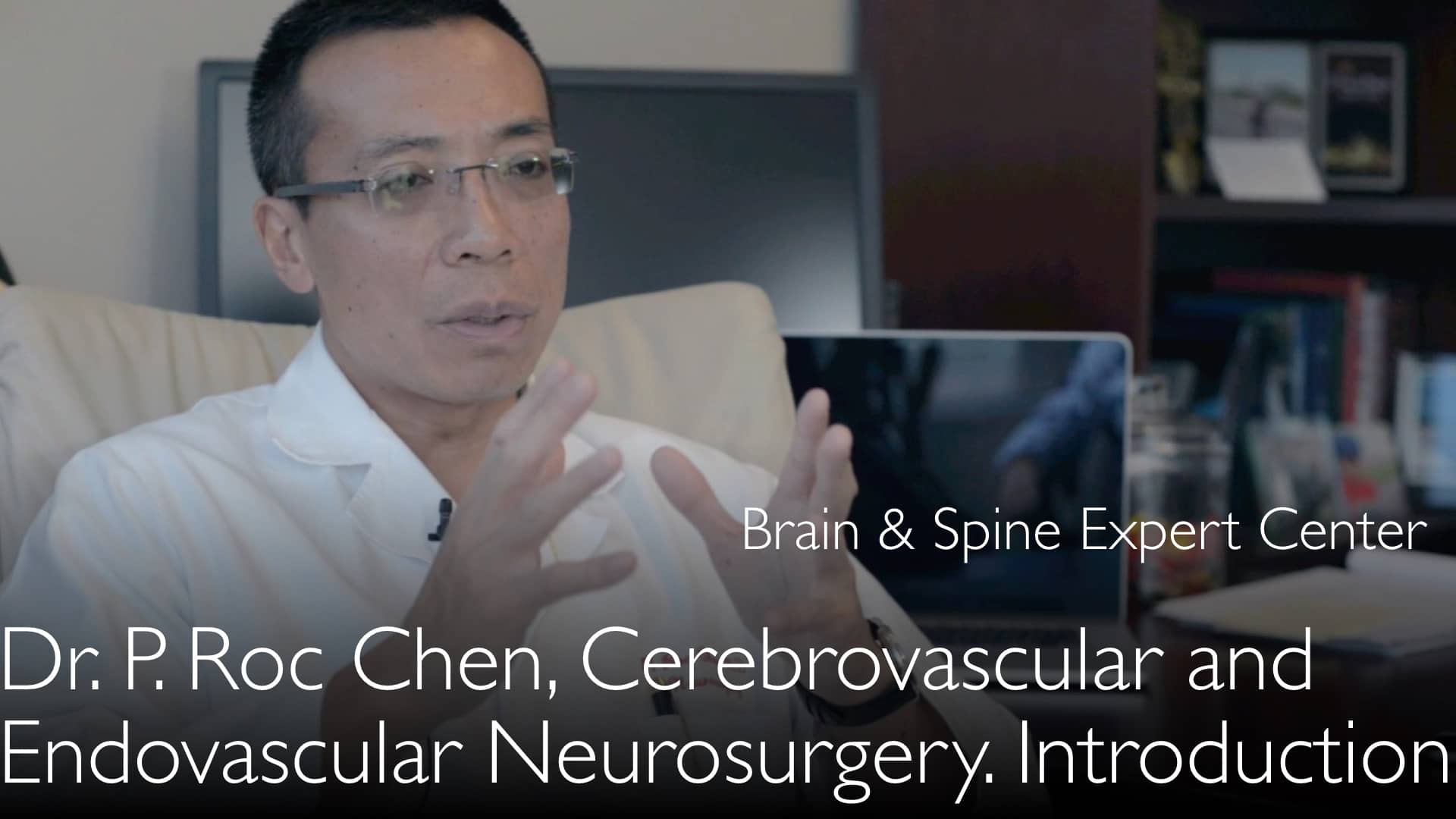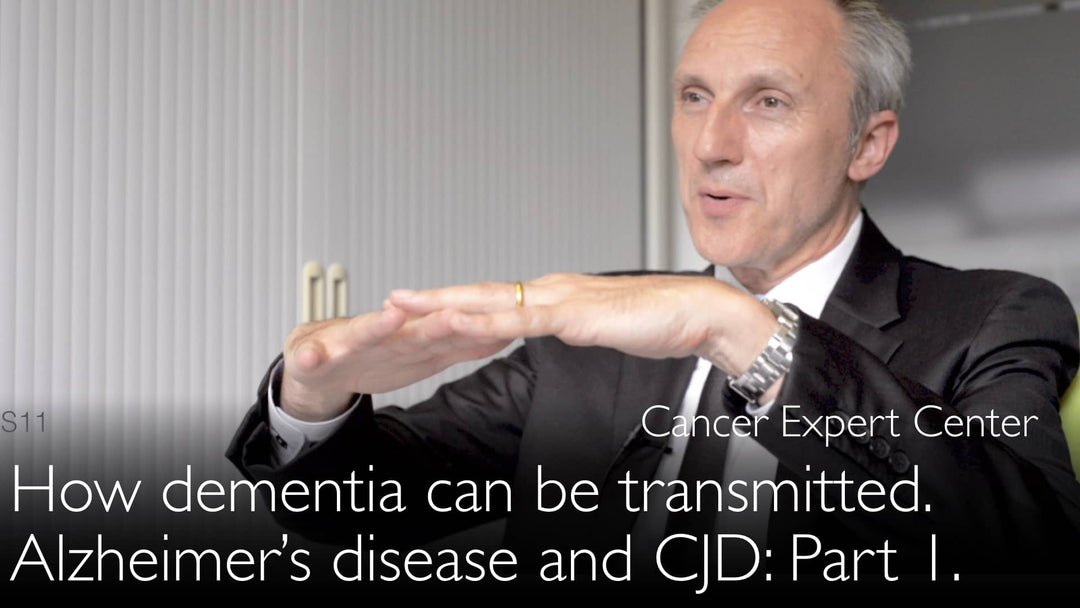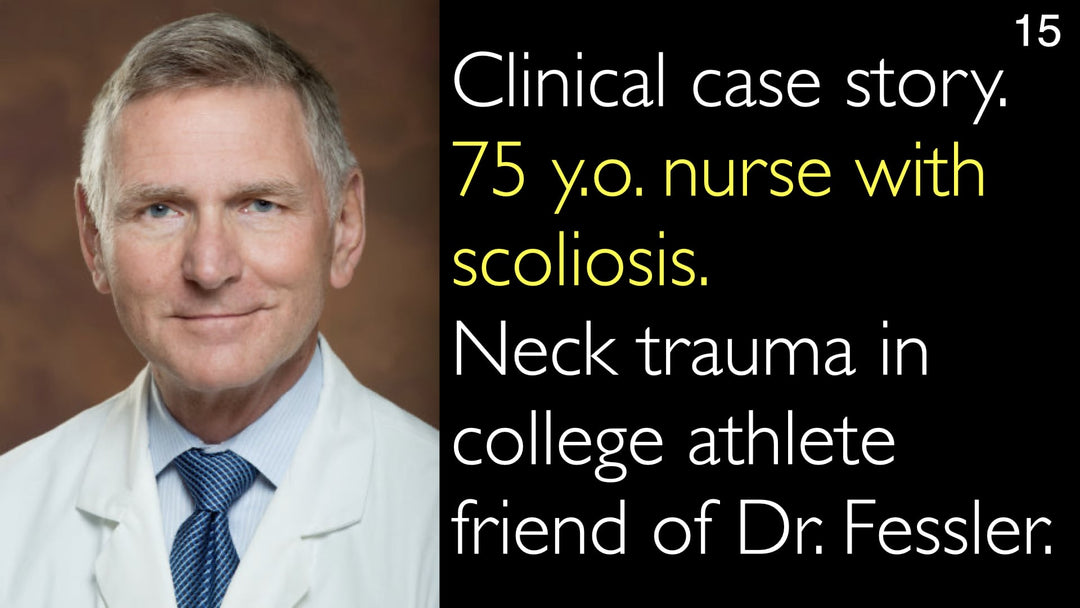Lääketieteen tohtori Peng Chen, aivoverisuus- ja endovaskulaarisen neurokirurgian johtava asiantuntija, selittää, kuinka aivovaltimon aneurysman muodostumisen ja repeämisen riskiä voidaan vähentää hallitsemalla keskeisiä muutettavia riskitekijöitä, kuten tupakointia ja kohonnutta verenpainetta. Hän käsittelee myös yksityiskohtaisesti perinnöllisen taipumuksen ja perhehistorian merkitystä yksilöllisen riskiprofiilin arvioinnissa.
Aivovaltimon pullistuman ehkäisy: Kuinka vähentää repeämisriskiä
Siirry osioon
- Aivovaltimon pullistuman riskin ymmärtäminen
- Keskeiset muokattavat riskitekijät
- Perhehistorian rooli
- Perinnölliset aivovaltimon pullistumien ilmiömallit
- Seulonta korkean riskin henkilöille
- Elämäntapamuutokset ehkäisyyn
- Milloin hakea lääkärin neuvontaa
Aivovaltimon pullistuman riskin ymmärtäminen
Aivovaltimon pullistumat ovat yllättävän yleisiä, ja niitä esiintyy arviolta 0,9–9 % väestöstä. Kuten tohtori Peng Chen, MD, selittää, nämä luvut perustuvat historiallisiin ruumiinavausaineistoihin, mikä viittaa siihen, että monet ihmiset elävät koko elämänsä pienen, repeämättömän aivovaltimon pullistuman kanssa tietämättä siitä. Kriittinen kliininen huolenaihe ei ole pelkkä pullistuman olemassaolo, vaan sen mahdollisuus repeytyä. Repeytynyt aivovaltimon pullistuma aiheuttaa verenvuotoaivohalvauksen, jonka kuolleisuus on tuhoisaa – jopa 50 %.
Keskeiset muokattavat riskitekijät
Aivovaltimon pullistuman muodostumisen tai repeämisen ehkäisy keskittyy tunnettujen, muokattavien riskitekijöiden hallintaan. Tohtori Peng Chenin, MD, mukaan kaksi merkittävintä tekijää ovat tupakointi ja hallitsematon korkea verenpaine (hypertonia). Tupakointi heikentää suonenseiniä suoraan, kun jatkuva korkea verenpaine aiheuttaa liiallista painetta näille heikoille alueille, lisäten sekä pullistuman muodostumisen että olemassa olevan pullistuman repeämisen todennäköisyyttä. Myös ateroskleroosia edesauttavat tekijät, kuten korkeat kolesteroli- ja triglyseriditasot, vaikuttavat haitallisesti aivojen verenkiertoon ja lisäävät kokonaisriskiä.
Perhehistorian rooli
Geneettinen altius on tärkeässä roolissa aivovaltimon pullistuman riskissä. Tohtori Peng Chen, MD, huomauttaa, että aivovaltimon pullistumia esiintyy noin 10 %:lla pullistumadiagnoosin saaneen potilaan sukulaisista. Tämä perheellinen taipumus noudattaa usein suoraa sukulinjaa, kuten isoäidiltä äidille tyttärelle. Aivohalvaus- tai selittämättömien aivoverenkiertohäiriöiden perhehistoria voi olla merkittävä varoitusmerkki perinnöllisestä pullistumamuodostumisriskistä, minkä vuoksi siitä on tärkeää keskustella lääkärin kanssa.
Perinnölliset aivovaltimon pullistumien ilmiömallit
Perheellisissä tai perinnöllisissä aivovaltimon pullistumissa ilmenee kiehtova ja kriittinen ilmiömalli. Tohtori Chen huomauttaa, että nämä pullistumat taipuvat usein repeytymään samankaltaisessa iässä eri sukupolvien kesken samassa perheessä. Vaikka tarkkoja geneettisiä ja biologisia mekanismeja tämän mallin takana ei täysin ymmärretä, tämä kliininen havainto on elintärkeä. Se korostaa ennakoivan seulonnan tärkeyttä henkilöille, joilla on vahva perheellinen tausta, koska se mahdollistaa mahdollisen toimenpiteen ennen repeämistä ennustettavassa elämänvaiheessa.
Seulonta korkean riskin henkilöille
Potilaille, joilla on perheellinen aivovaltimon pullistumatausta, tohtori Peng Chen, MD, suosittelee varhaista ei-invasiivista kuvantamista. Magneettiangiografia (MRA) on yleinen seulontatyökalu, joka pystyy havaitsemaan pullistuman ilman tunkeutuvia toimenpiteitä. Tämä ennakoiva seulonta on kulmakivi korkean riskin henkilöiden ehkäisyssä, mahdollistaen neurokirurgien seurata vakaita pullistumia tai suunnitella sähäistä hoitoa korkean repeämisriskin arvioiduille, välttäen näin katastrofaalisen hätätilanteen.
Elämäntapamuutokset ehkäisyyn
Tehokkaimmat toimet aivovaltimon pullistuman ehkäisyyn liittyvät elämäntapamuutoksiin. Tohtori Peng Chen, MD, korostaa, että tupakoinnin lopettaminen on yksi merkittävin muutos, jonka voi tehdä. Verenpaineen hallinta ruokavaliolla, liikunnalla ja tarvittaessa lääkityksellä on yhtälailla kriittistä. Yleisen terveyden ylläpito säännöllisellä liikunnalla ja kolesterolitasojen hallinta tukee verisuonien eheyttä. Kuten tohtori Peng Chen, MD, selittää, mikä tahansa, joka vaarantaa sepelvaltimoiden terveyden, vaikuttaa negatiivisesti myös aivojen verisuoniin.
Milloin hakea lääkärin neuvontaa
Henkilöiden, joilla on useita riskitekijöitä, tulisi konsultoida terveydenhuollon ammattilaista henkilökohtaista riskinarviointia varten. Tämä on erityisen tärkeää niille, joilla on suora perheellinen aivovaltimon pullistuma- tai verenvuotoaivohalvaushistoria. Haastattelussa tohtori Anton Titovin, MD, kanssa tohtori Chen korosti, että lääketieteellinen toinen mielipide voi olla korvaamaton jo diagnosoiduille pullistumapotilaille. Se vahvistaa diagnoosin ja varmistaa, että valittu hoitosuunnitelma — olipa se sitten seuranta, endovaskulaarinen sulkusoolaus tai kirurginen leikkaus — on sopivin vaihtoehto kyseiselle tapaukselle.
Koko transkriptio
Tohtori Anton Titov, MD: Kuinka ehkäistä aivovaltimon pullistumia? Kuinka vähentää aivovaltimon pullistuman repeämisriskiä? Voiko aivovaltimon pullistumaa ehkäistä? Mitä voi tehdä pullistuman ehkäisemiseksi? Mikä aiheuttaa aivovaltimon pullistuman muodostumisen?
Johtava endovaskulaarinen ja cerebrovaskulaarinen neurokirurgi jakaa näkemyksensä aivovaltimon pullistumien riskeistä ja ehkäisystä. Aivohalvaus- tai selittämättömien aivoverenkiertohäiriöiden perhehistoria voi kertoa riskitekijästä aivovaltimon pullistuman muodostumiselle.
Ehkiä aivovaltimon pullistumia. Vähennä aivovaltimon pullistuman repeämisriskiä. Video-haastattelu endovaskulaarisen neurokirurgian huippuasiantuntijan kanssa. Lääketieteellinen toinen mielipide vahvistaa, että aivovaltimon pullistumadiagnoosi on oikea ja täydellinen.
Lääketieteellinen toinen mielipide auttaa valitsemaan parhaan hoidon aivovaltimon pullistumalle. Hanki lääketieteellinen toinen mielipide aivovaltimon pullistumasta ja ole varma, että hoitosi on paras.
Aivovaltimon pullistumien riskitekijöitä ovat tupakointi, huonosti hallittu verenpaine, hypertonia ja verisuonien ateroskleroosi. Eivät kaikki aivovaltimon pullistumat revähdy. Mutta aivovaltimon pullistumat taipuvat repeytymään samassa iässä eri sukupolvissa samassa perheessä.
Vähennä aivovaltimon pullistumien riskiä. Kuinka ehkäistä aivovaltimon pullistumia ja vähentää riskiä. Kuinka ehkäistä aivovaltimon pullistumia? Milloin aivovaltimon pullistuman riski kasvaa?
Tohtori Peng Chen, MD: Tämä on edelleen yksi tutkimusvaiheessa olevista kysymyksistä. Saamme enemmän tietoa ajan myötä. Kuitenkin tiedämme joitakin riskitekijöitä aivovaltimon pullistumille. On olemassa yleisiä riskitekijöitä. Ihmiset voivat oppia vähentämään aivovaltimon pullistumien kehittymisriskiä.
Yleisessä väestössä noin 0,9–9 %:lla ihmisistä saattaa olla pieni aivovaltimon pullistuma. Nämä tiedot perustuvat 1950–1980-lukujen ruumiinavausaineistoihin. Joten tämä ei ole täydellinen, mutta voidaan sanoa, että se on ehdottomasti väestöpohjaista ja merkityksellistä.
Totuus on, että vain pieni osa näistä potilaista kokee aivovaltimon pullistuman repeämisen elinaikanaan. Joten melkoinen määrä potilaita ei koskaan koe aivovaltimon pullistuman repeämistä.
Toisaalta, jos aivovaltimon pullistuma repeää, kuolleisuus voi olla jopa 50 %. Aivan oikein. On tärkeää ajatella, että tiedämme aivovaltimon pullistuman kehittymisen riskitekijöitä. Niistä väitellään vähemmän.
Ne ovat tupakointi, hallitsematon korkea verenpaine. Se on jatkuva korkea verenpaine. On myös tekijöitä, jotka edesauttavat ateroskleroottista sairautta. Esimerkiksi on geneettisiä tekijöitä. Niitä on vaikea määrittää.
Aivovaltimon pullistumien geneettiset riskit ovat vaikeita muuttaa. Hallitse kolesterolitasoasi. Hallitse triglyseriditasoasi. Se antaa lisämerkitystä näille riskeille.
Mikä tahansa, joka potentiaalisesti vaarantaa sepelvaltimoidesi, kehosi verisuonien terveyden, heijastuu negatiivisesti myös aivojen verisuoniin. Siksi, kuten aiemmin korostin, tupakointi pitäisi olla se asia, jonka voimme poistaa.
Lopeta tupakointi helposti. Muuta elämäntapaamme. Poista tupakointi kokonaan. Verenpaineen voit hallita aivovaltimon pullistuman riskin vähentämiseksi. Joskus sinulla on verenpaineongelma.
Ilmeisesti tietyillä lääkkeillä saat hyvän hallinnan. Yleinen terveys. Liikunnalla on aina merkitystä. Ne asiat ovat ehkä paljon vaikeampia muuttaa.
Voi olla perheellinen aivovaltimon pullistumatausta. Aivovaltimon pullistumia voi esiintyä noin 10 prosentilla aivovaltimon pullistumapotilaan sukulaisista. Tyypillisesti aivovaltimon pullistumat esiintyvät samaa suoraa perhelinjaa pitkin.
Esimerkiksi äidillä on pullistuma ja isoäidillä oli aivovaltimon pullistuma. Äiti koki aivovaltimon pullistuman repeämisen. Joten tyttären kannattaa tutkia mahdollista aivovaltimon pullistumien riskiä.
Aivovaltimon pullistumalla on potentiaalinen repeämisriski. Meillä on myös ajatus joistakin perheellisistä aivovaltimon pullistumista. Kutsumme niitä perinnöllisiksi aivovaltimon pullistumiksi. Se voi johtua monitekijäisestä geneettisestä osallistumisesta.
Kliinisestä näkökulmasta näillä aivovaltimon pullistumapotilailla on taipumus aivovaltimon pullistumien repeämiseen samankaltaisessa iässä. Emme tiedä, miksi niin tapahtuu. Mutta tiedämme, että aivovaltimon pullistuman vuoto tapahtuu samankaltaisessa iässä.
Joten tämä tosiasita on pidettävä mielessä. Näillä potilailla on perheellinen aivovaltimon pullistumatausta. Sitten suosittelemme näille potilaille varhaista ei-invasiivista kuvantamatutkimusta (magneettiangiografia).
Kuinka ehkäistä aivovaltimon pullistumia ja vähentää riskiä. Voiko aivovaltimon pullistumaa ehkäistä? Voinko ehkäistä aivovaltimon pullistuman repeämisen? Tupakointi, hypertonia, aivohalvausten ehkäisy.








